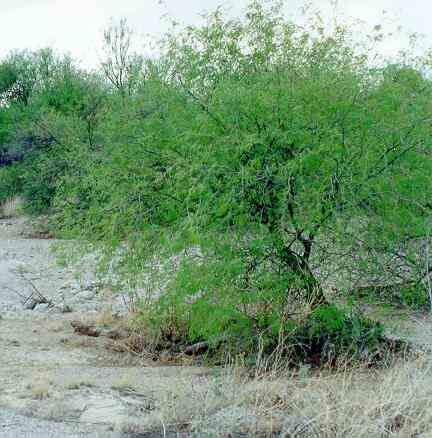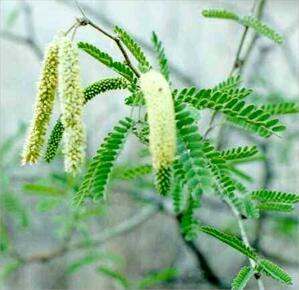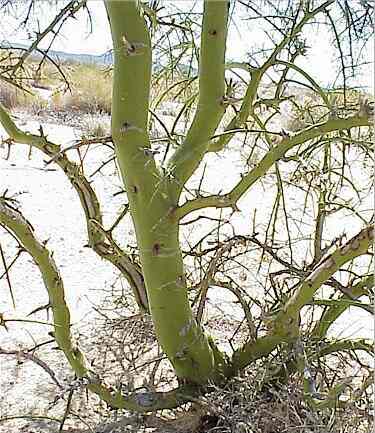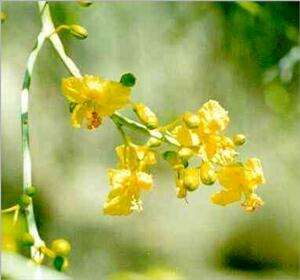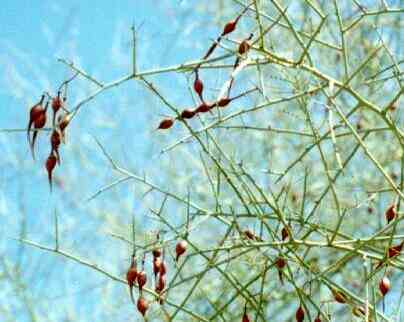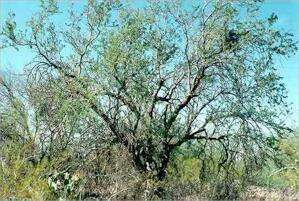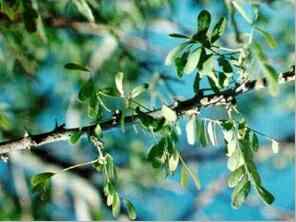|
Seventy-eight percent of the earth's atmosphere is composed of nitrogen gas (N2) but this is not available as a nitrogenous nutrient for plants. Instead, it must be "fixed" (reduced) into ammonium (NH4) in order to be used as a nutrient - a process that only some bacteria are able to do. Some of these nitrogen-fixing bacteria (Rhizobium and closely related bacteria) live in association with leguminous plants - the plant family that used to be called Leguminosae, but now is termed Fabaceae. Some of the nitrogen fixed by these bacteria is passed to the plants - an important contribution to the fertility of deserts. Three of the main types of tree that occur in desert regions have nitrogen-fixing bacteria in their roots - mesquite, ironwood and paloverde. Mesquite (Prosopis species)
Mesquite is a common tree of desert
washes and low-lying desert areas. It has extensive
shallow roots but also has very deep tap roots that can
draw water from deep in the soil profile. It produces
pod-like fruits containing very hard seeds that often
need to be scarified (chipped or damaged) by abrasion
before they germinate. This is achieved by periodic flash
floods in desert washes, when the seeds are abraded by
moving gravel. There are three major types of paloverde, all of them having narrow, dissected leaves which are shed in periods of drought. The green stems continue to photosynthesize after when the leaves are absent. Foothills palo verde (Cercidium microphyllum) is common on rocky slopes and is a major nurse tree for cacti. It is often found with saguaro and other large cacti in the Sonoran desert. Blue palo verde (C. floridum) is less drought tolerant than foothills paloverde, being found mainly on the banks of desert washes. Mexican palo verde (Parkinsonia aculeata) is usually in moist valley soils
Ironwood (Olneya tesota) is a frost-sensitive tree, found only in the southernmost part of the USA, but more commonly in Mexico. Because of its frost-sensitivity, its presence is used as an indicator of sites where citrus (also frost-sensitive) can safely be grown on desert land cleared for irrigated agriculture. There is a substantial citrus industry near the town of Yuma in the extreme southwestern corner of Arizona.
For other nitrogen-fixing trees, see: smoke tree, acacia |
